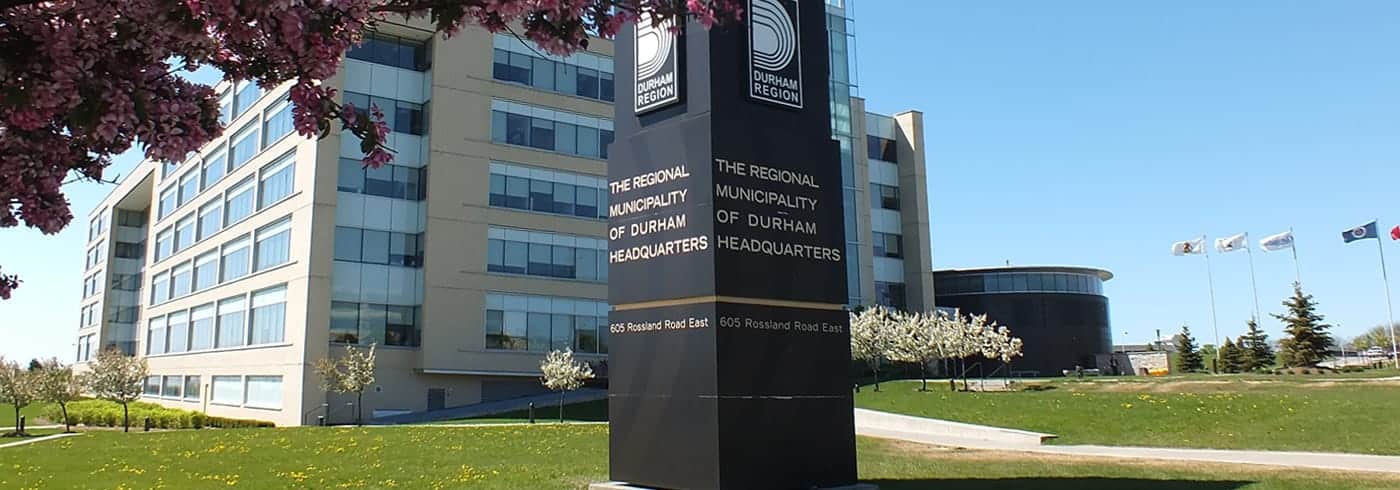Durham Region to ‘stand together’ amid provincial review Ajax, Clarington, Oshawa, Pickering mayors pledge
Published September 8, 2023 at 3:01 pm

Durham Region’s mayors and chair have pledged to “stand together” amid a provincial review of Ontario’s two-tiered municipalities.
The mayors, Ajax’s Shaun Collier, Brock’s Dave Barton, Clarington’s Adrian Foster, Oshawa’s Dan Carter, Pickering’s Kevin Ashe, Scugog’s Wilma Wotten and Whitby’s Elizabeth Roy, alongside Durham chair John Henry, released a statement on Sept. 8.
In it, they reiterated their commitment to the collaborative ideal of the Regional system. “We are proud of our partnership; our close to 50 years of mutual respect. We focus on delivering a two-tier government model that is fiscally responsible. A model that delivers vital services across municipal borders, such as clean water, policing, paramedics and more,” the statement reads.
The message of cooperation is the latest statement to come along since the Ontario government approved the dissolution of Peel Region in the spring. Mississauga has long pushed to leave its Peel partners Brampton and Caledon. Mississauga and Brampton are respectively the third and fourth largest cities in Ontario by population.
Former Housing Minister Steve Clark announced the Peel split in November and announced the province would appoint advisers to review all the other two-tiered municipalities. Clark has since resigned from his cabinet post after provincial watchdogs found he did not adequately supervise the “biased” Greenbelt land swap which favoured certain developers.
Taking over from Clark is Paul Calandra, the Doug Ford government’s go-to pinch hitter minister. Calandra left the Long-Term Care ministry, which he also took over after the previous minister, Ajax MP Rod Phillips, resigned in disgrace in January 2022.
While the ongoing Greenbelt scandal has taken up much of its focus of late, the housing ministry has remained committed to reviewing all the province’s Regional governments including Durham, Halton, Niagara, Waterloo, York and others. Shortly before his Labour Day resignation, Clark confirmed a Waterloo facilitator would be appointed by the end of September.
Reactions to the review have been widely mixed. Halton has rejected the idea of amalgamation into one city, while others in York advocated the opposite. Durham has been committed to sticking together ever since the initial announcement of the Peel dissolution.
Roy confirmed there we no plans, conversations or desires among the eight municipalities to split off from the Region back in May. “I know for our communities it is not a request at this point,” she said.
Her comments came just days after Henry said much the same. “There have been no concerns raised about the size or structure” of Durham, he said at the time.
“Our Region, and the eight local municipalities, have a productive and strong track record of working together to serve our residents,” he continued, “Together, we provide the backbone of service delivery in a two-tier structure that ensures services are planned, funded, and delivered in a cost-effective manner; and on a large geographic scale.”
The two-tiered structure allows the Regional government to provide many services to residents, Henry said, without duplicating municipal efforts. “Together, we maintain Durham’s reputation as a community where equitable, high-quality services are available to everyone.”
Much of the Sept. statement said much the same with the leaders saying, “Just like all families, we’ve leaned on, learned from, and supported one another during some very difficult times. Like every good team, our mutual respect, effective co-operation, and spirit of understanding have propelled us through more difficult times. Locally, we have dealt with a global pandemic and significant damage from catastrophic weather events. We got through it together.”
As it stands, the eight municipalities are home to about 743,000 people, rivalling Mississauga in population size. This is expected to continue to grow until it reaches 1.2 million residents by 2040. However, those people will be far more spread out than in denser urban areas as Durham Region spans across 2,500 square kilometres.
This makes Durham the largest region in the GTA by area and contributes to the mayors and chair’s belief in the Regional system. “The current two-tier model is the best choice; providing fiscally responsible savings for our programs and services through economies of scale.”
However, the region is still looking forward to the review saying, “We welcome opportunities to review our processes, find efficiencies and look forward to learning about innovative approaches and how we can work better together.”
INdurham's Editorial Standards and Policies




